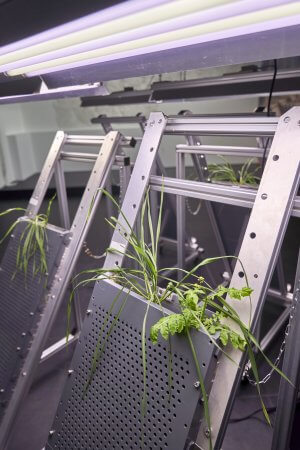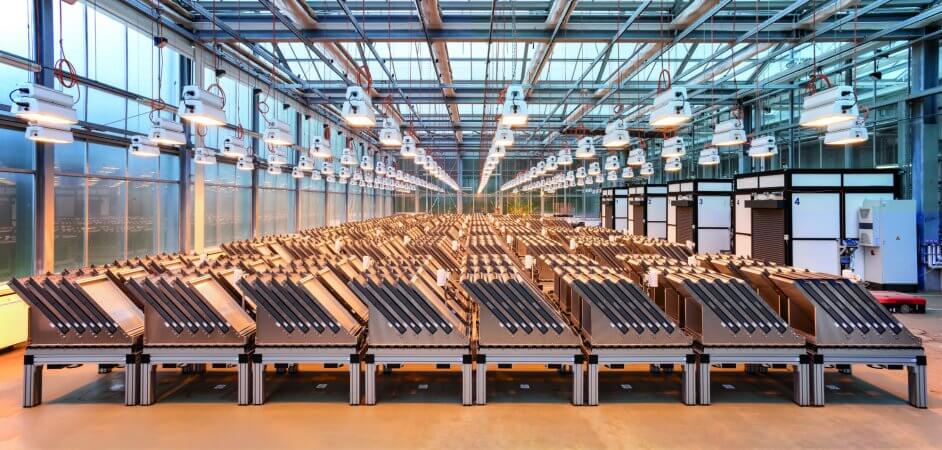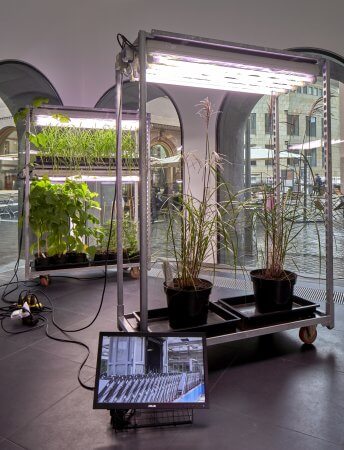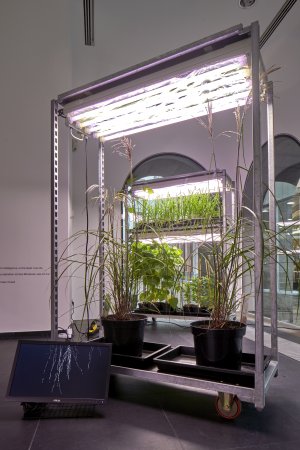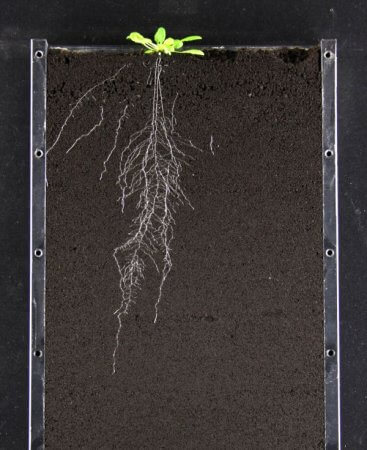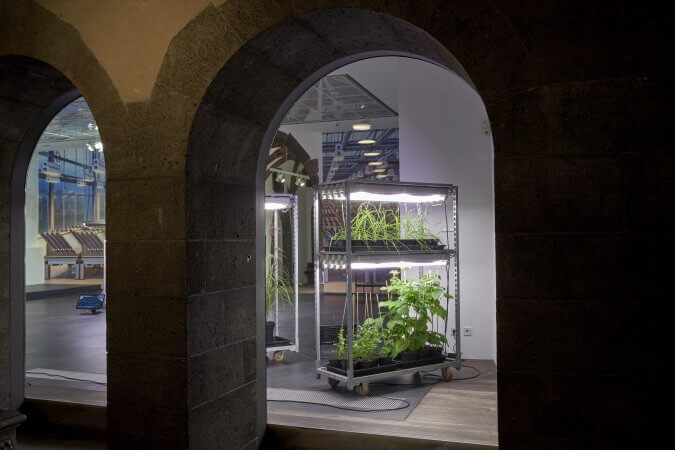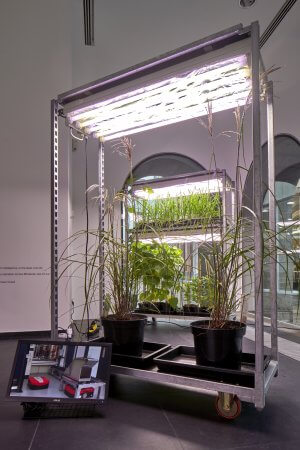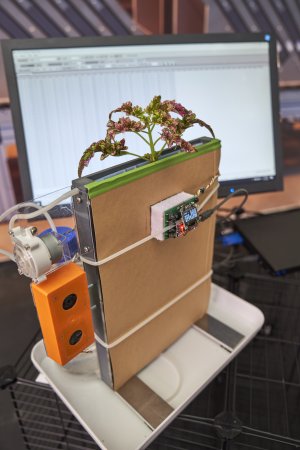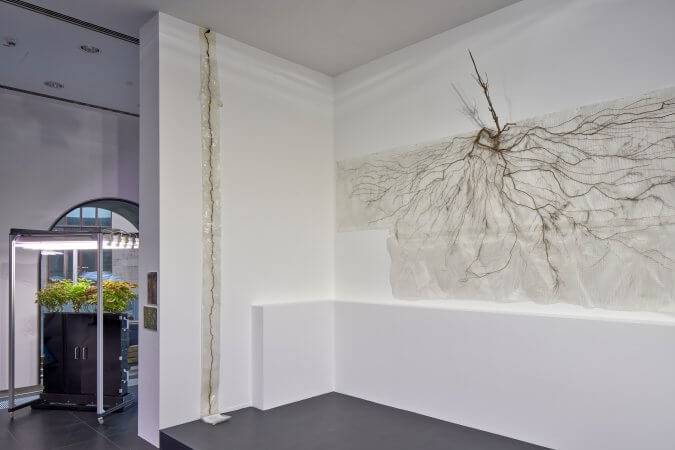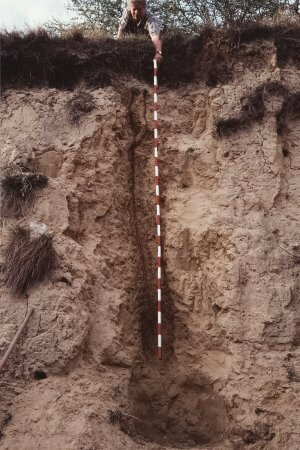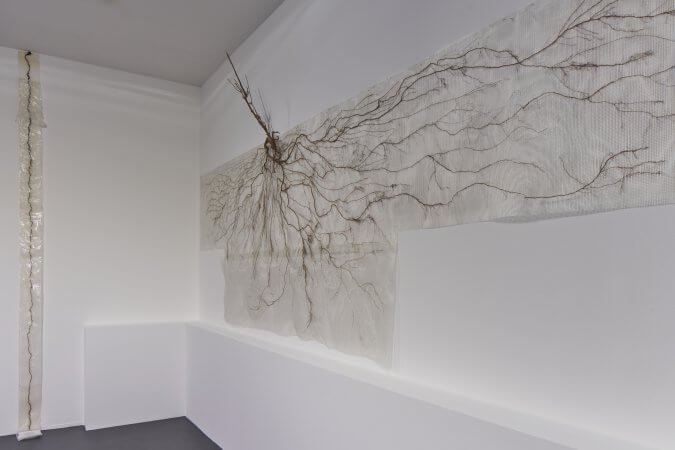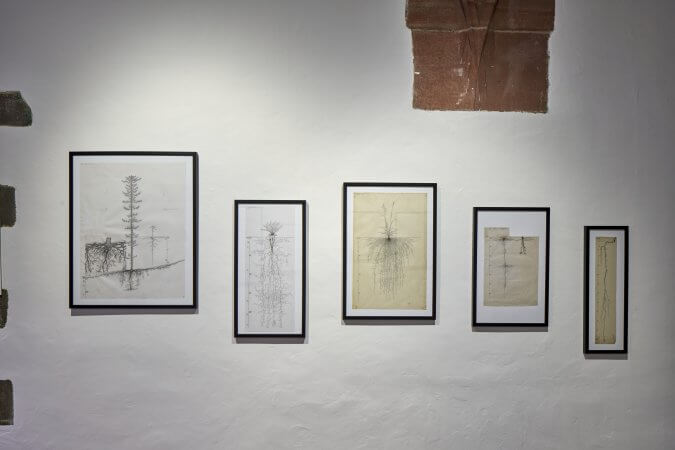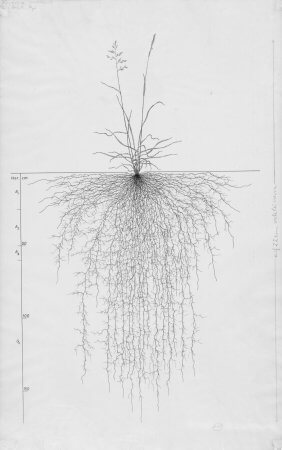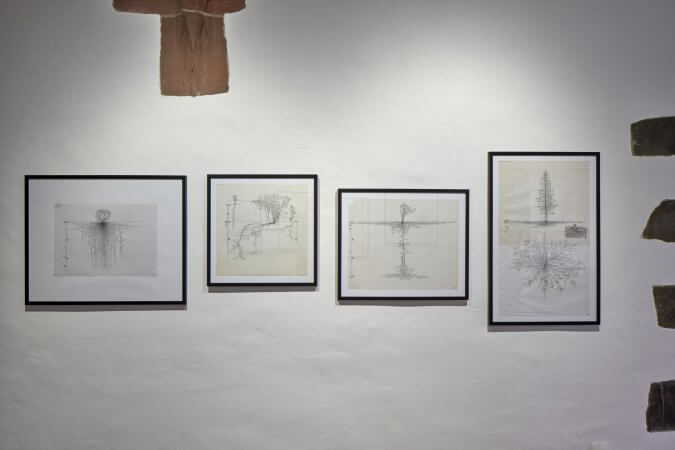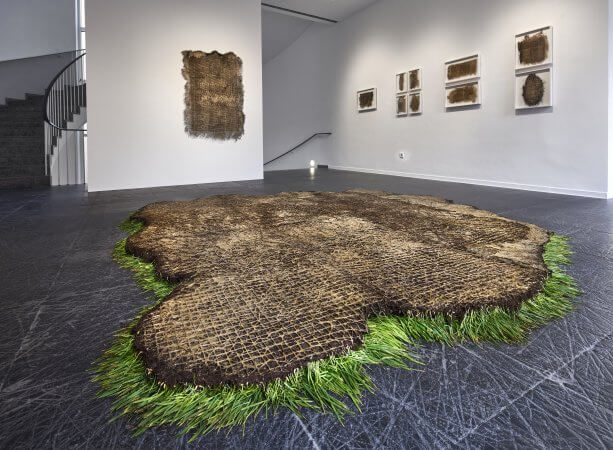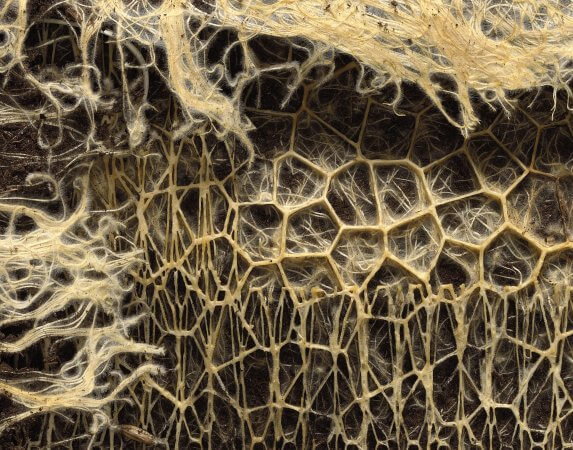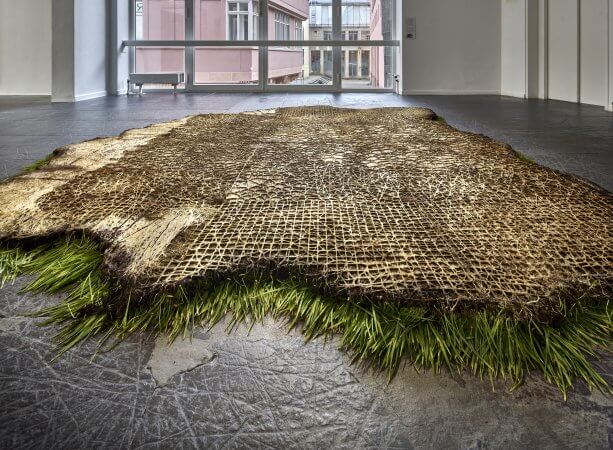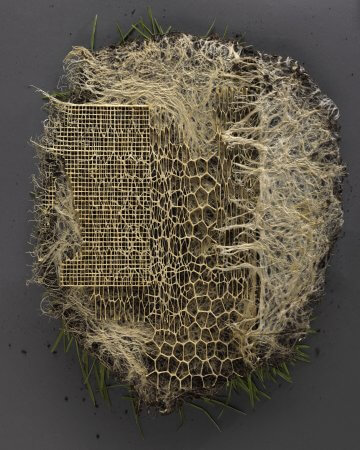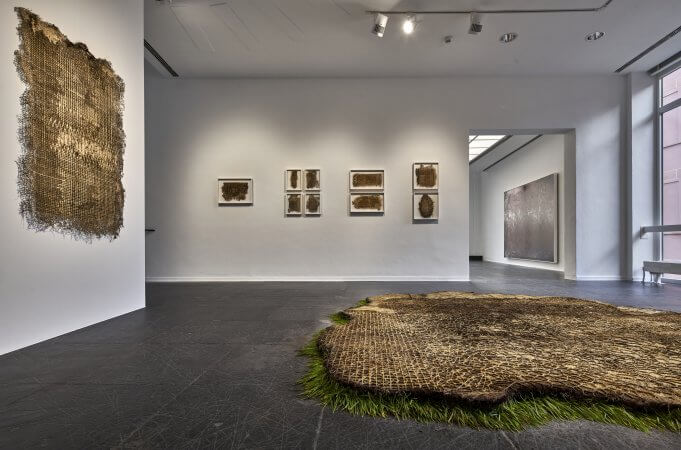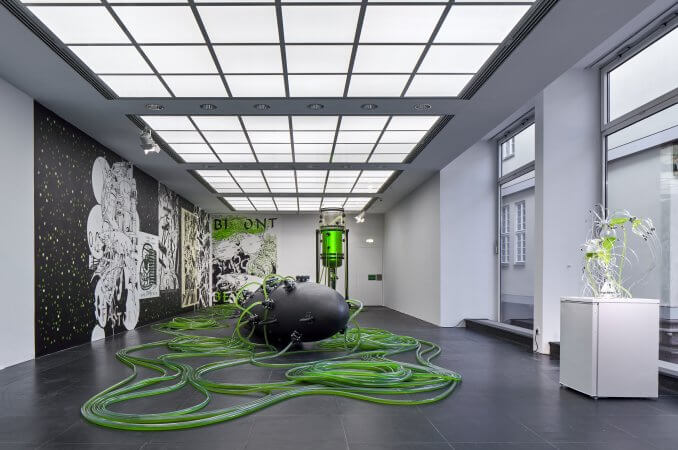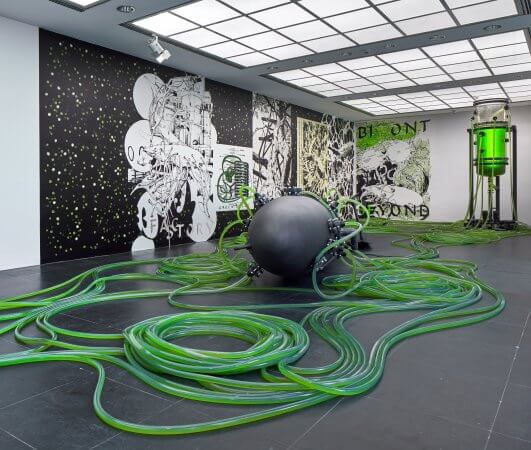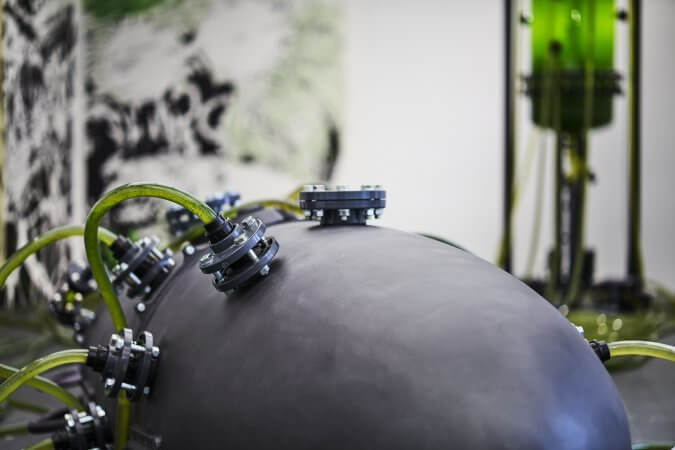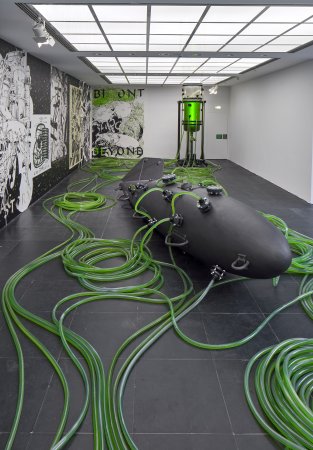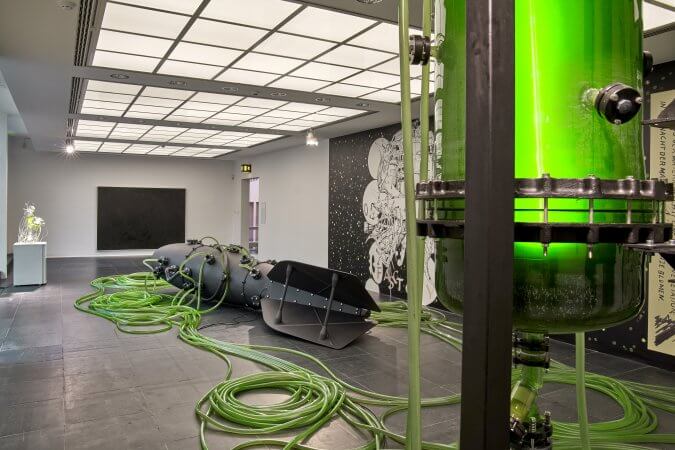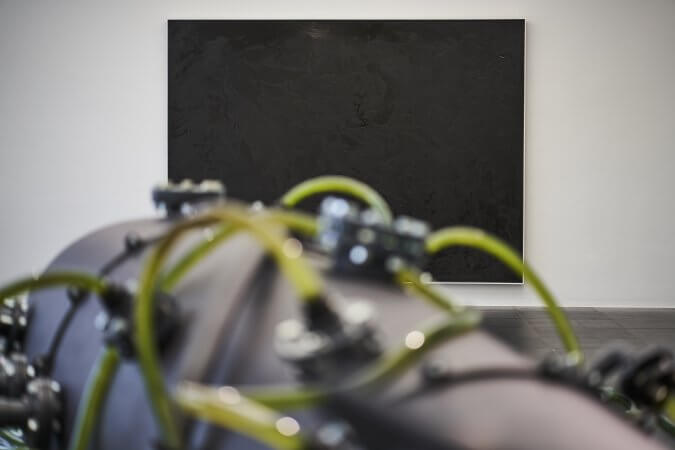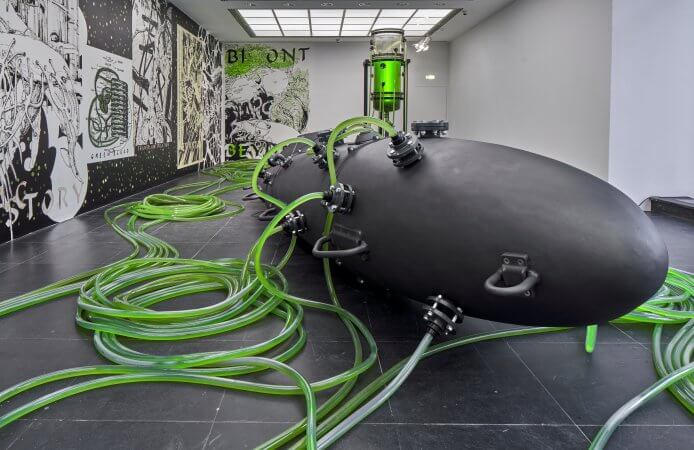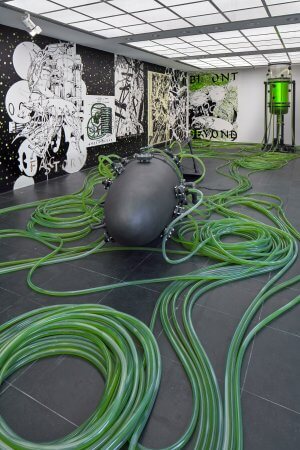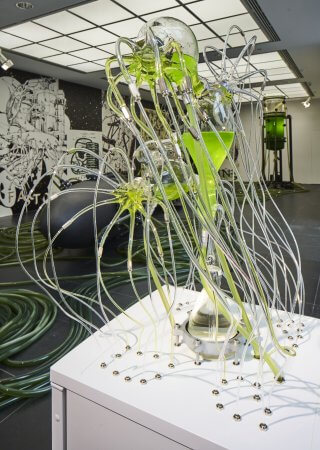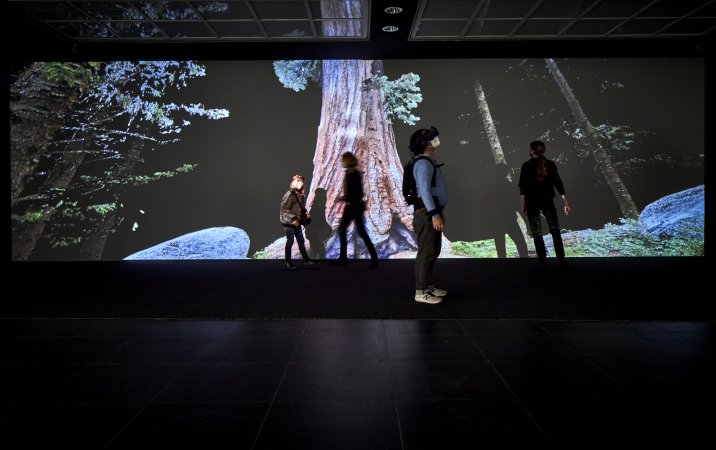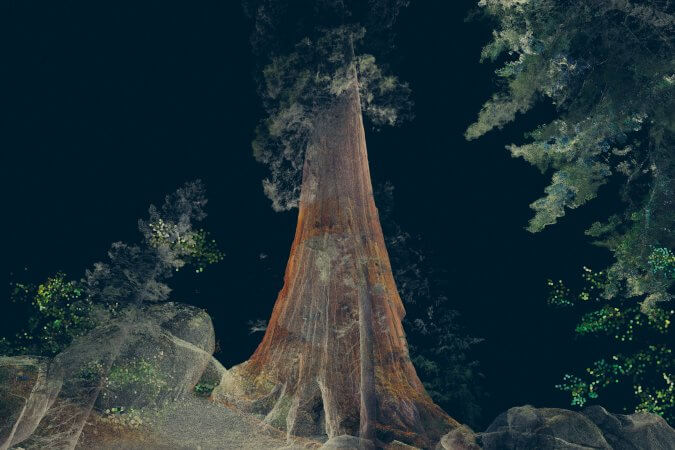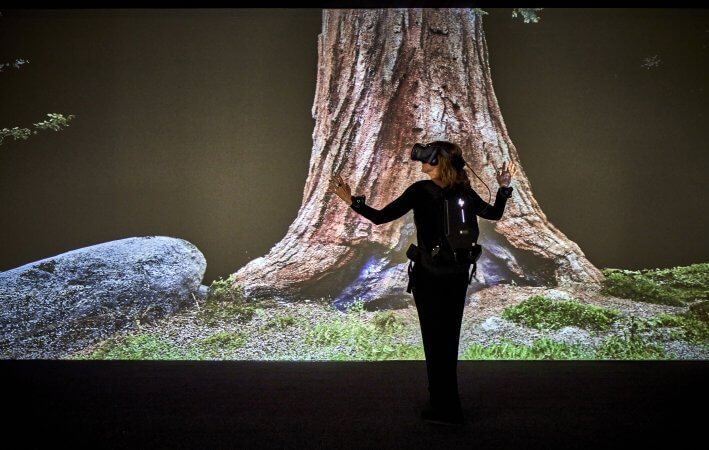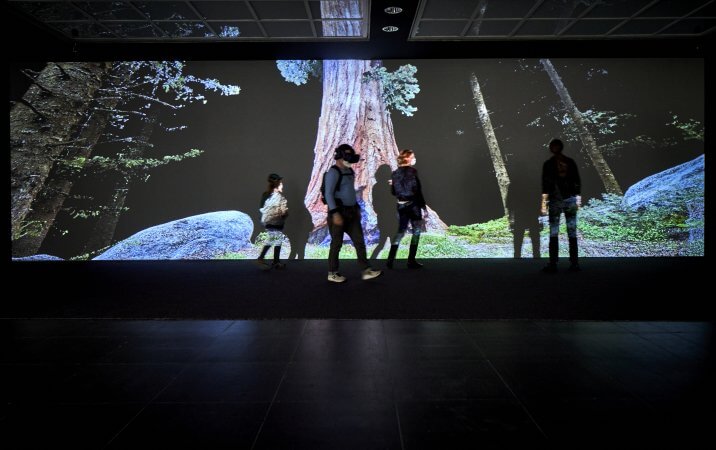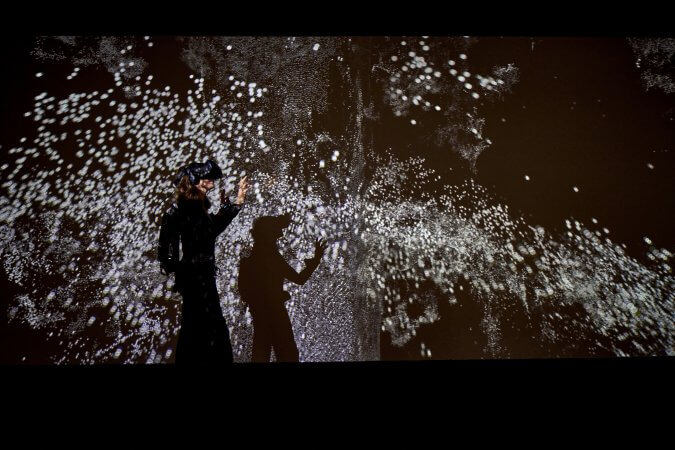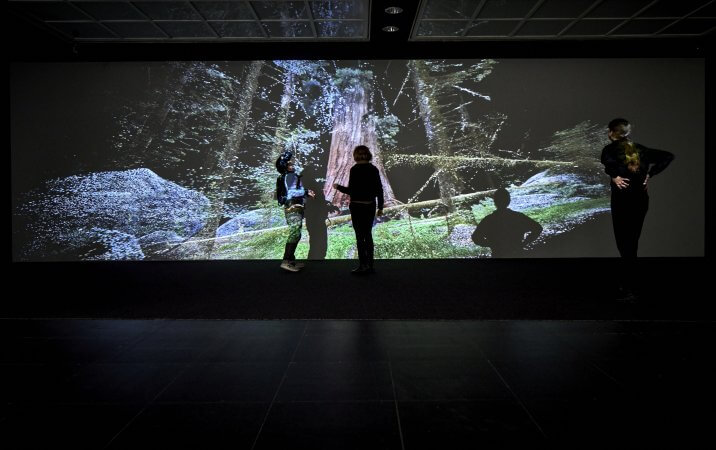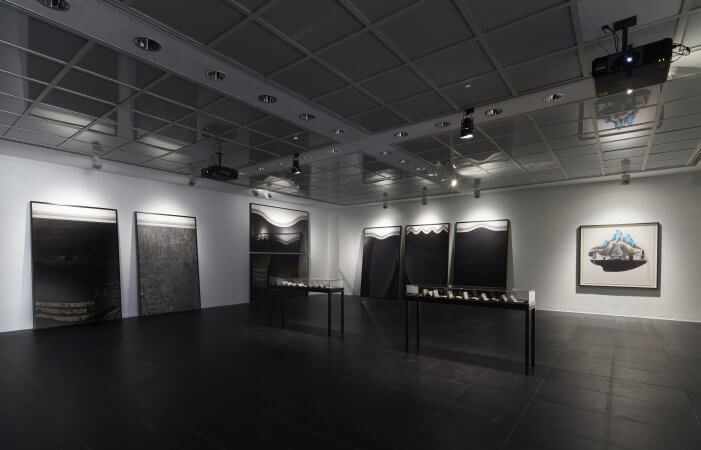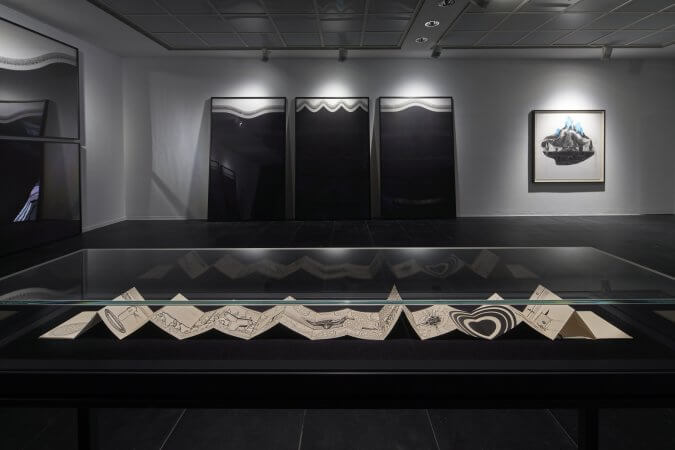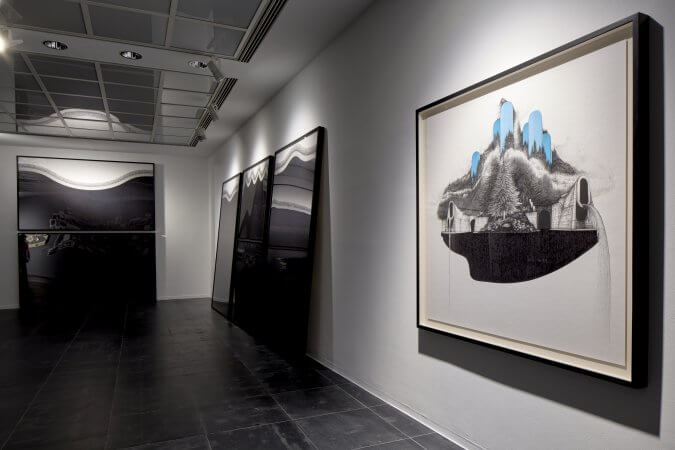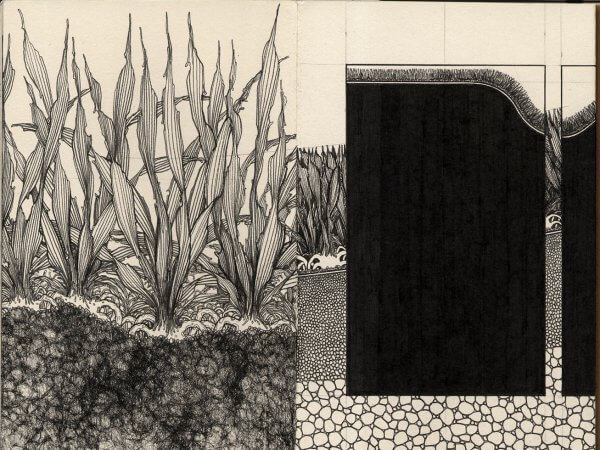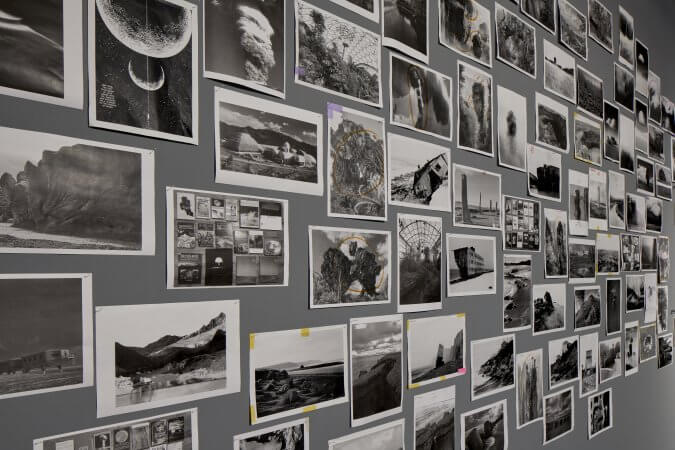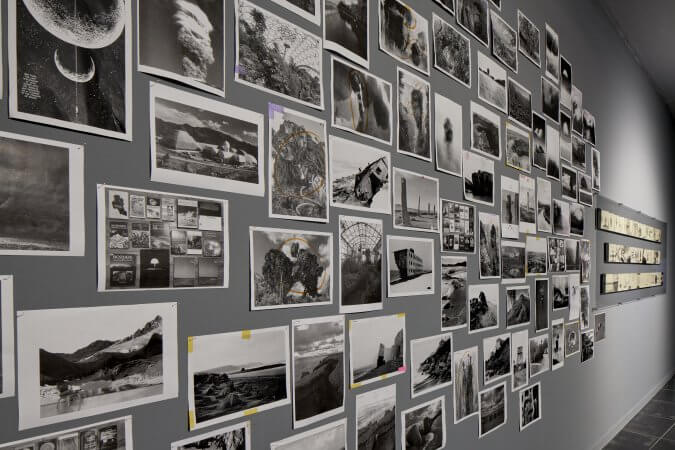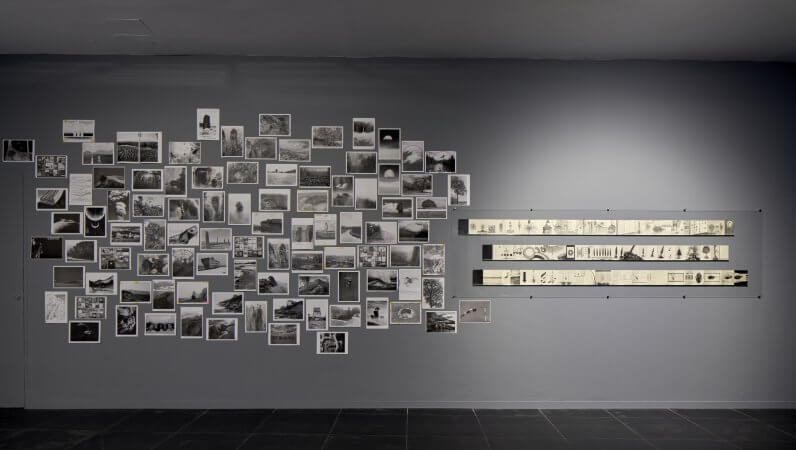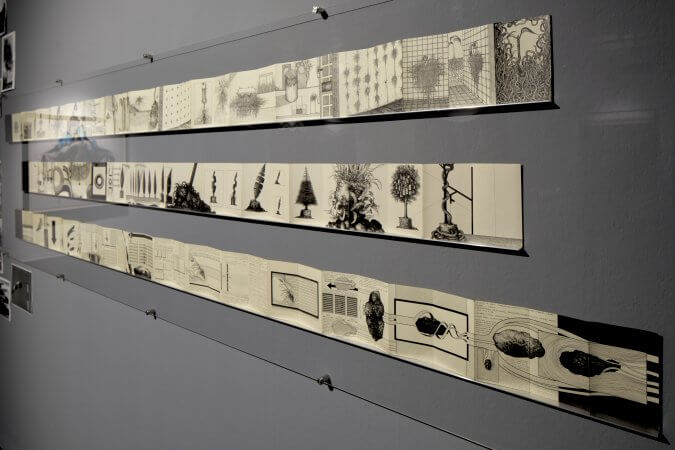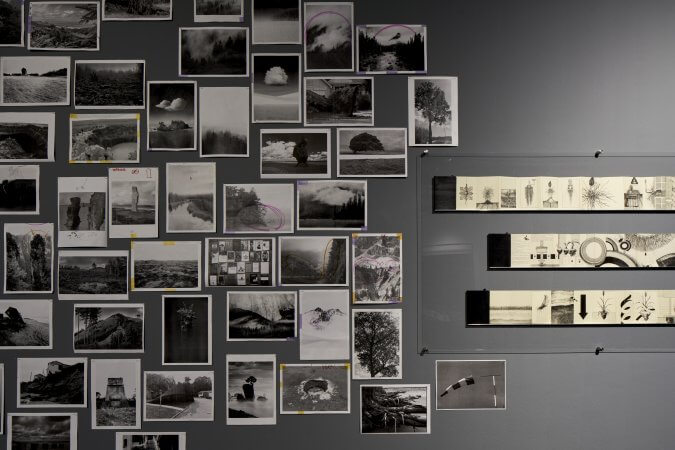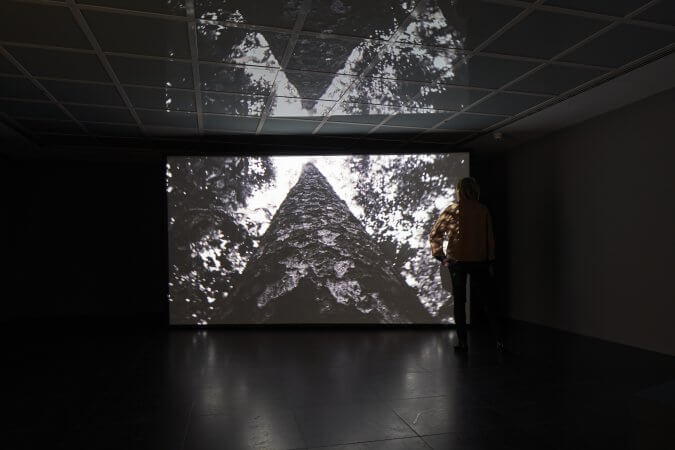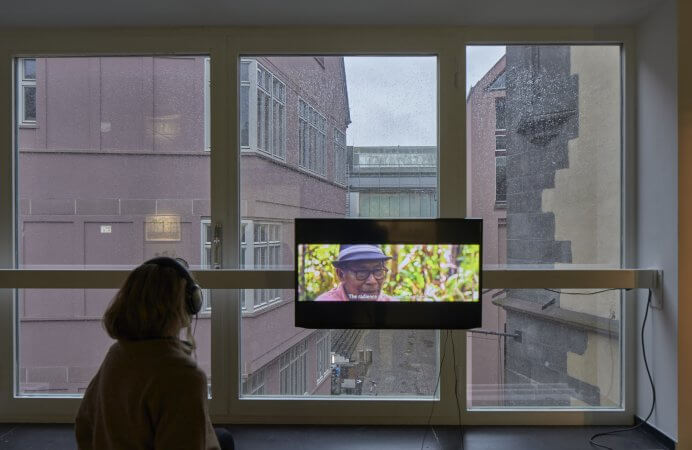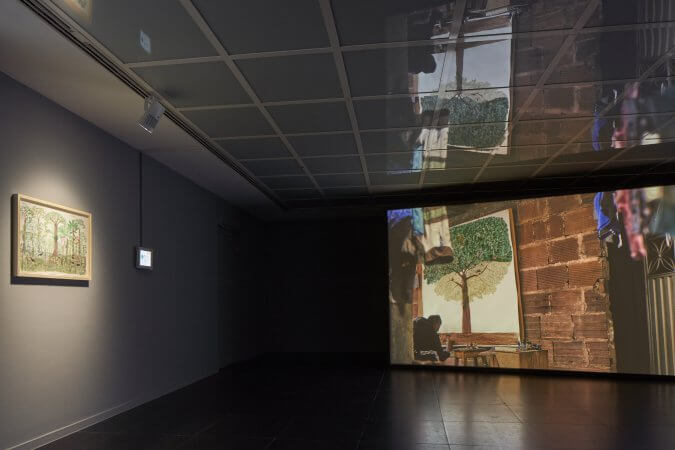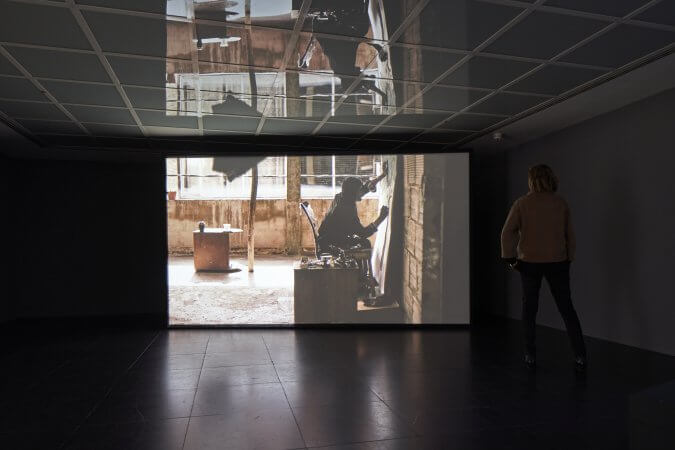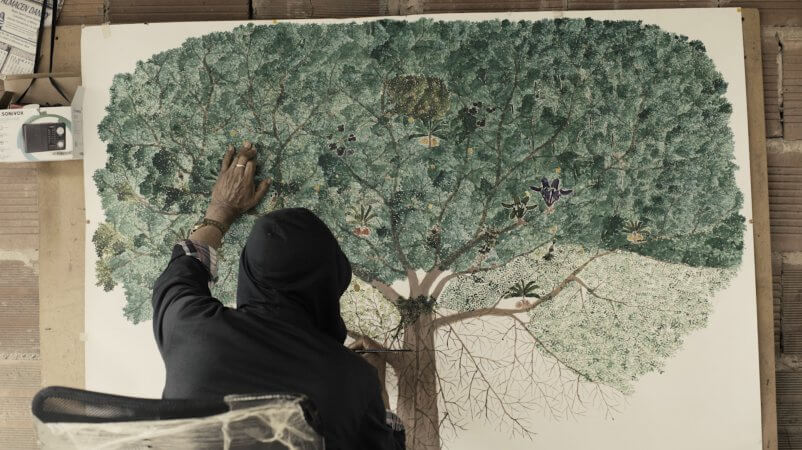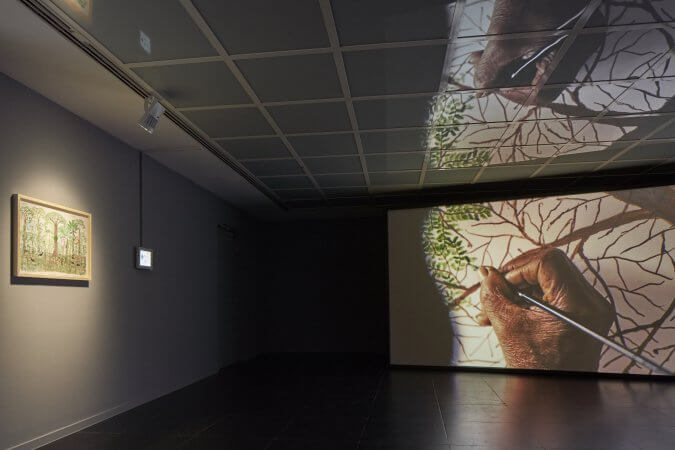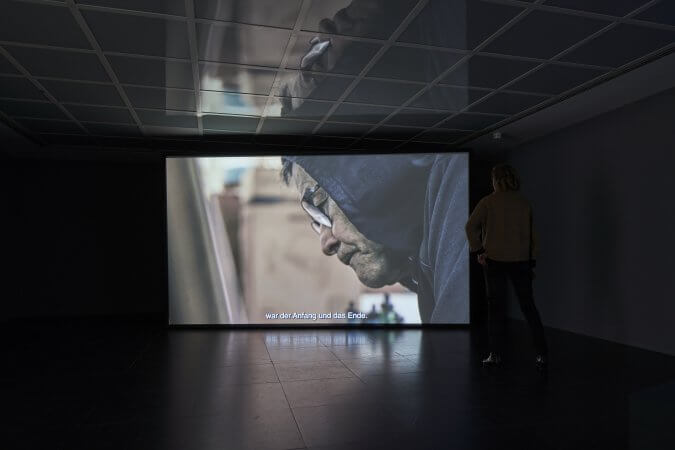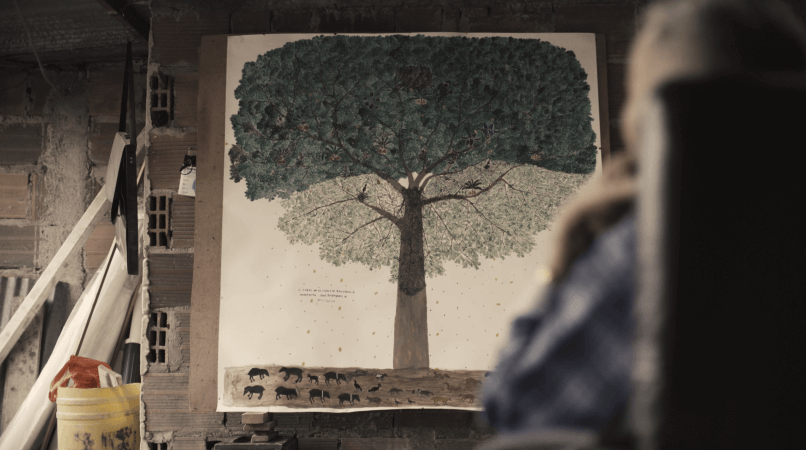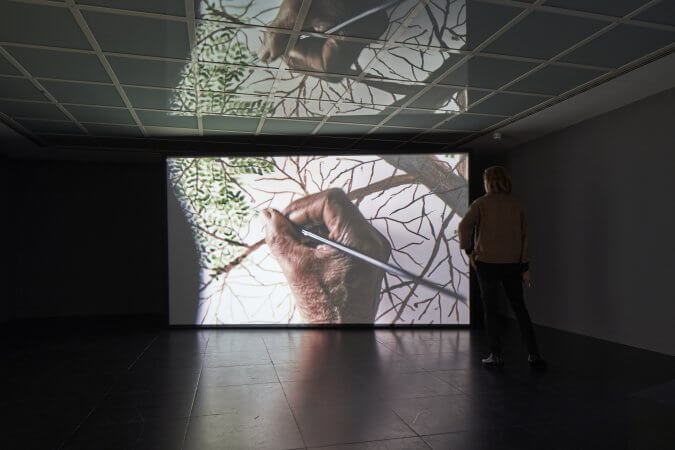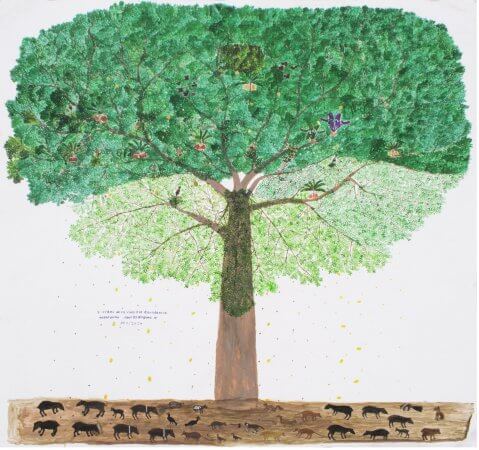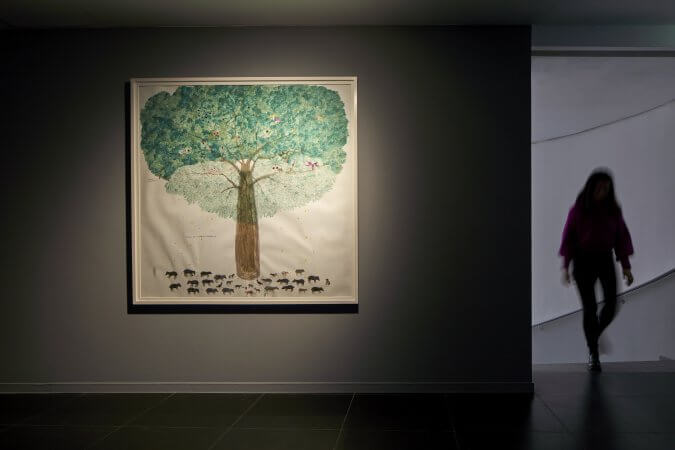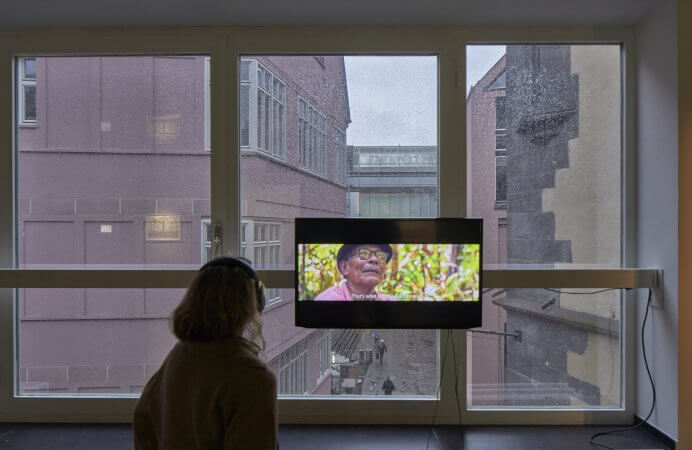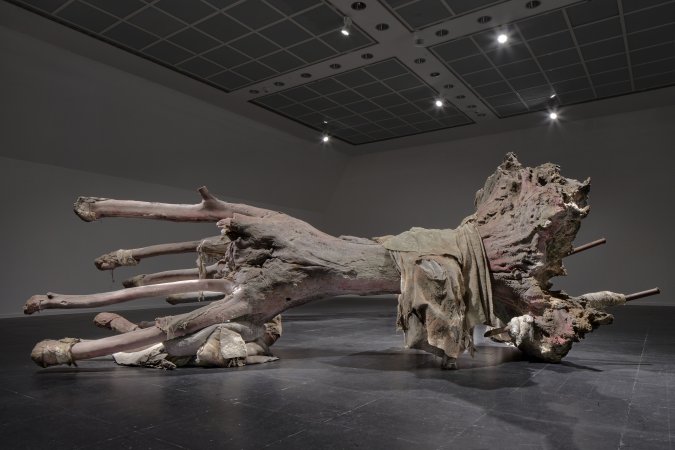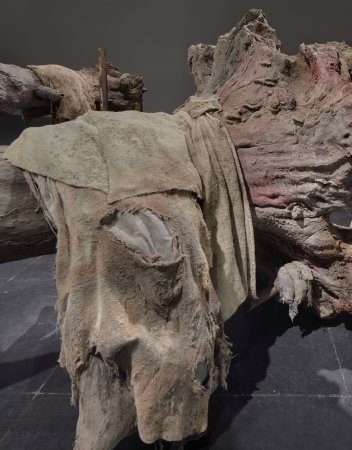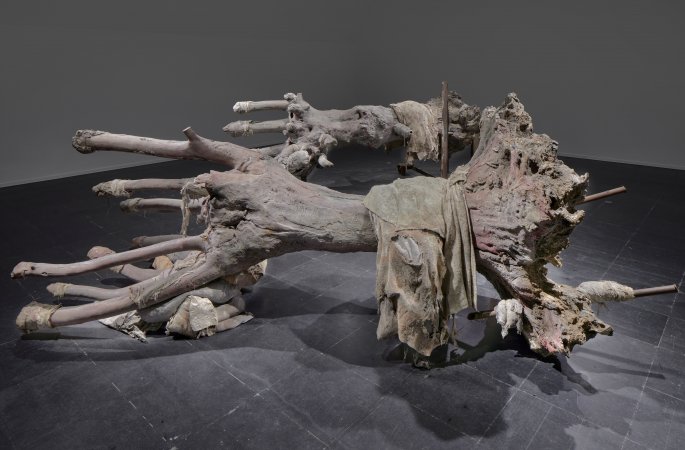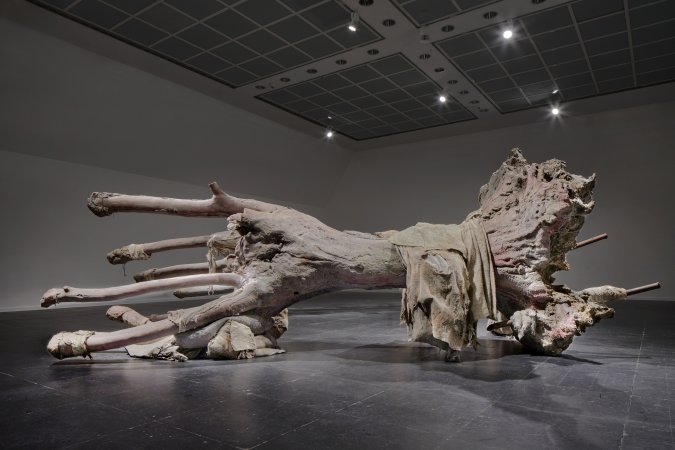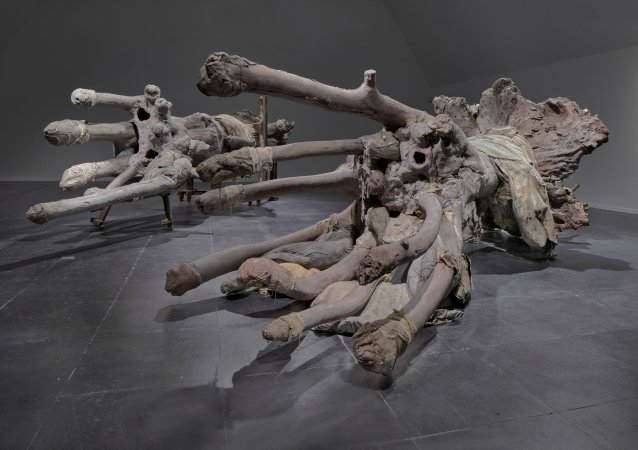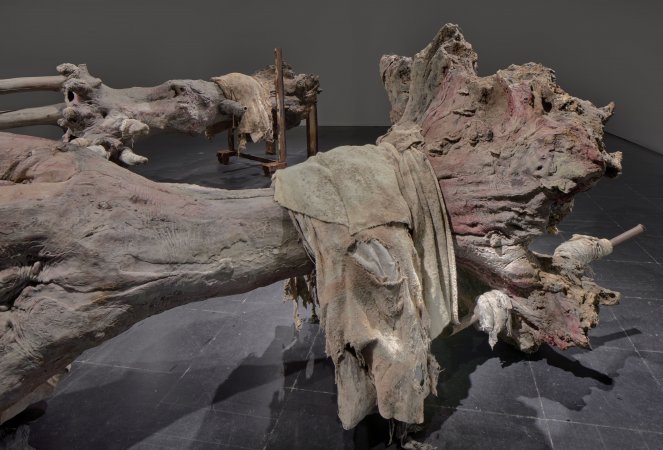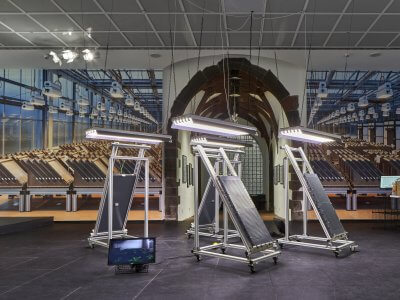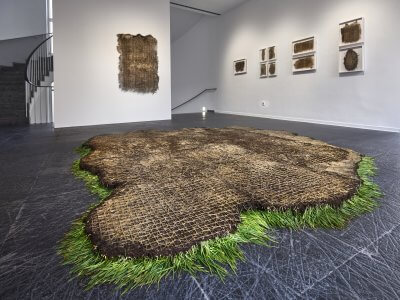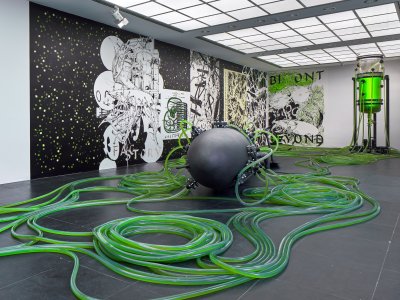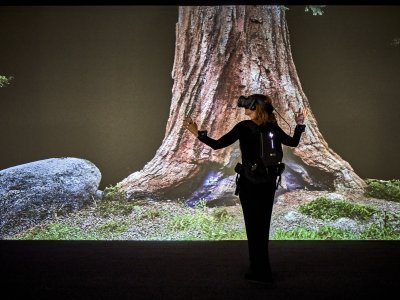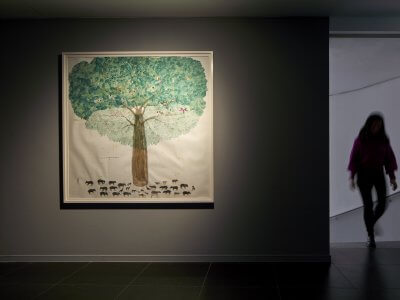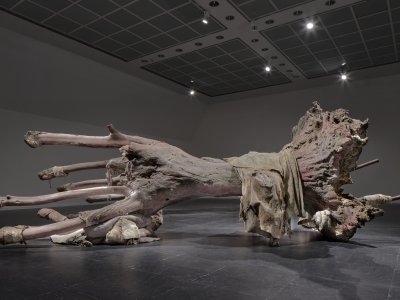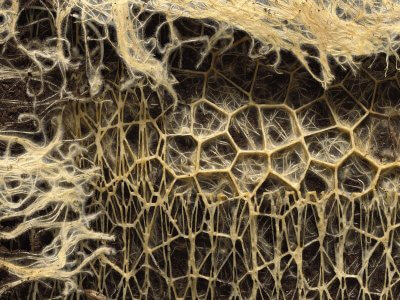The Intelligence of Plants
16.10.2021 — 20.02.2022
Opening: Friday, October, 15, 2021, 7 pm
With Berlinde De Bruyckere, Thomas Feuerstein, Marshmallow Laser Feast, Abel Rodríguez, Diana Scherer, Nicola Toffolini and with exhibits from Forschungszentrum Jülich (Institute for Plant Science), Pflanzensoziologisches Institut (Austria)
Curated by Franziska Nori
The Intelligence of Plants – an Alliance of Science and Art
For more than ten years, scientists have been searching for a new interpretation of the so-called intelligence of plants. Who are these fellow creatures that make up 85% of the organisms on our planet? And is it time for us humans to improve our coexistence with them, since our survival depends on them?
Plants, as international researchers now believe, have a form of intelligence unique to their species. Like animals and humans, they have a drive to exist, which is why they engage in complex, increasingly explored strategies of interaction with their environment and other species. What biologists are now discovering about the abilities of plants is helping to revise our overarching conception of life. Increasingly, there is a need to rethink our image of humans, and to understand ourselves as part of a system based on interdependence.
One interpretation of intelligence is the ability to process information efficiently and to respond to environmental conditions with adaptation. Is this enough to label the adaptability of plants with intelligence? In the current debate over this attribution, the application of linguistic descriptions from human contexts to plant life has become a central dispute.
Without the achievements of natural scientific knowledge that have emerged in numerous faculties in recent years, new considerations could not have led to the shift of perspective that is currently taking place. Thanks to technology-based imaging procedures on living beings, we now understand interrelationships in a different way. Which conclusions the different actors and interpreters in the current social debate draw from this depends on the respective question they deduce from the existing database.
The objectivity of scientific mathematical understanding guarantees a rational understanding of larger contexts and at the same time allows us to maintain an emotional distance. This condition, however, at the same time disconnects us from our inner knowledge, from the feeling of existing as part of a context.
The Frankfurter Kunstverein works with the conviction that a meaningful interplay between science and art is central to society. As a place of public encounter for diverse experts, including artists, complex factual knowledge can be presented and placed in larger contexts.
Together, science, philosophy and the arts can combine knowledge to discuss the search for a future direction of social, political and economic life.
The Limits of Growth
Questioning the world from a purely human perspective, from the anthropocentric point of view, seems increasingly inadequate. For centuries, in our Western view, we have perceived the world as a system of opposites in which living beings compete against each other for survival in a Darwinian interpretation; a system in which only the strongest prevails. Especially in view of the ever more urgent environmental problems, numerous attempts are emerging for a new definition and an instruction for action in the relationship between man and nature. For the capitalist and industrial approach, nature and living beings are quantified resources whose performance increase must lead to plannable growth and profit.
The destruction of grown habitats for the use of functional monocultures (keyword worldwide deforestation for the cultivation of soya, palm oil etc), the patenting of DNA of plants and living beings with the aim of profitability and industrial use, undermines the essential principles of life. What has taken place in the course of escalation in the 20th and 21st centuries are irreversible planetary processes of species extinction and biosphere destruction. Meanwhile, the awareness has arisen that only a radical change of perception and action and a new understanding of interdependencies of all living beings can ensure a chance for survival. From more and more observations and scientific findings this world view gets fractures and a turn in the western thinking breaks through. Not everywhere, but steadily more. And this change comes on the one hand from the accumulated observations of natural phenomena, which no longer allow to be read as single manifestations. On the other hand, from the understanding that we are confronted with a system-immanent problem, i.e. the realisation that growth cannot be unlimited. A realisation that Dennis and Donella Meadows and Jorgen Randers made public already in 1972 in the context of the Club of Rome with the book The Limits to Growth. Half a century later, we have understood the consistency of these considerations, but politically we are still a long way from initiating any actions of change.
Moreover, an ethical rethinking has also taken place, which poses anew the questions of identity and who has the interpretive authority. The dominance of the male, Western, white voice is being put into perspective today. The transformation which is being fought for today is that neither gender nor ancestry can be a criterion for participation in the creation of collective narratives. This may result in conflict in a first instance, but in perspective the opening is a compelling transformation from which emancipation and enrichment result.
A change of mindset began in the 20th century. Progress as the dominant narrative and intention of modern societies is being questioned and the search for other values is in full swing. It can be seen that a tectonic movement is taking place in all societies on the planet at the moment, as the triggers are now taking place on a global scale – examples include social divide, consequences of climate change, overpopulation and resource exploitation. But the range of possible responses could not be more different. Increasingly radical political groupings have emerged, increasingly fanatical religious communities have formed, or a withdrawal into increasingly individual private worlds has taken place. On the other hand, young people’s environmental movements have emerged around the world that stand up for a new way of living together under the values of democratic participation.
A New Sensibility Towards Plants
Due to their physical nature, plants have neither a neural system nor a brain. Plants are far from being understood as socially active beings. However, since scientific findings of a small but growing group of natural scientists have been debated in a broader public and have meanwhile also led to new approaches by researchers from the humanities, this old and seemingly consolidated idea is changing.
There is a growing number of voices that see plants as complexly acting living beings organised in communities. Plants shape worlds. Thus, the exhibition The Intelligence of Plants tries to be a sounding board of these voices, and exemplarily unites a selection of artistic positions, scientific exhibits and concepts of thinkers and scientists who are doing pioneering work for a new thought structure.
Already Lynn Margulis has created with her work the overarching idea of a symbiotic earth. From the point of view of a biologist and cell researcher, she succeeds in searching for the questions of the origin of life and for the principle of the constant change of life forms. For she recognises the essence of our world in the fundamental principle of the constant transformation of every living and non-living being. What lives is in a constant change of its materiality. And what connects everything on our planet is to be composed of the same basic elements, which again all originate from the primeval times of the universe. The transformation of the structure creates new forms of existence, which in turn exist with each other in a reciprocal relationship.
Stefano Mancuso is one of the founders of plant neurobiology, which explores signal transmission and communication at all levels of biological organisation, from genetics to molecules and cells to ecological communities. The title of the exhibition at the Frankfurter Kunstverein pays homage to Mancuso’s research and book Brilliant green: The surprising history and science of plant intelligence (2015, with Alessandra Viola), which caused an international stir and polarisation for its definition of plants as intelligent beings. His comparison between measurable behaviors with terminology otherwise drawn from human social contexts is highly controversial. And yet his impulses have generated a great deal of resonance in the consideration of other living things. Mancuso’s scientific experiments of root growth, the responses of certain plant species to external influences, have reinforced his thesis that these beings have 15 senses through which they interact with the environment. Because of their sessile nature, Mancuso argues, they resolve their response to danger in an entirely different way than their animal and human fellow creatures. This knowledge could enable people today to gain a new awareness of these species, which are so important for the survival of mankind.
The philosopher Emanuele Coccia takes up the scientific findings and formulates them into an overarching whole, a philosophy of plants, in which he succeeds in allowing us to at least glimpse a new, revised image of nature. He questions how our animal chauvinism prevents us from even perceiving the truth of plants. His book The Life of Plants: A Metaphysics of Mixture (2018) broadens our view of this form of the living:
„By their very existence, plants change the world on a global scale, without even moving, without even acting. For them, being means making the world, and vice versa, the construction of (our) world, the making of the world, is only a synonym for being. And not only the plants try this coincidence: it can be seen even more clearly in the case of organisms. Thus we must generalize this insight and conclude that the existence of any living thing is necessarily a cosmogonic act.“ (Emanuele Coccia, The Life of Plants: A Metaphysics of Mixture, 2018)
Canadian biologist Suzanne Simard is the central voice advocating that plants must be seen as complex living things, cooperating, communicating, and building communities with each other to form supraorganisms on which to base what we call the world.
Simard’s Canadian colleague, Dr. Teresa Ryan draws from the heritage of her Tsimshian ancestors and her work as a fisheries scientist and expert in natural resource preservation. Motivated by the way her ancestors interacted with the environment, Ryan shows how Tsimshian synergistic knowledge of cyclical resource production and variability can help promote the sustainable use of fisheries resources today. Ryan incorporates the knowledge of her First Nation culture into her scientific research. She joins the chorus of voices advocating for a worldview in which all species are interconnected as parts in a larger system, in contrast to a Western worldview that sees all living things as separate. Younger generations have embarked on a search for their identities, and in some cases are discovering ancient knowledge that has been destroyed and repressed by the dominance of Western, white culture. A new search for meaning and identity through narratives is emerging.
Anna Lowenhaupt Tsing is an American anthropologist. Her work is rooted in an awareness of ecological upheaval. Convinced that progress is now at an end, she explores various narrative structures to describe the current situation and identify some glimmers of hope for the communal survival of multiple species.
These and many other natural scientists work at the frontier and interface with the humanities. This is where the bridges have been built that call for a paradigm shift in society as a whole. Artists around the world have been among the first to sense and respond to these new intellectual shifts, and have now turned their research and the focus of their work to this issue.
It is surprising that these thoughts are an interesting recollection of ancient practices. In the Western context, ideas around the symbiotic are narrated as innovative thinking, while this is a recollection of ancient knowledge from a time that was pre-industrial and pre-technological.
A return to identity-forming ancient spiritual structures of meaning can be observed, while indigenous communities around the world are fighting for the transmission of their knowledge and the survival of their cultures. More and more ways of thinking which make big interconnections are also manifesting themselves in the sciences. And interestingly, we are noticing great compatibility. Central here is the question of passing on and transmitting so that old knowledge is not forgotten. What do people pass on to their children, to the following generation? Today, very few people can name plants. They do not know their function and their life cycle. And so there is an alienation that generates actions without reverence and without awareness of the connections, without love and respect for natural materials that were once living beings.
With the exhibition The Intelligence of Plants, we present artists who demonstrate this new sensibility towards fellow plant life. These attitudes are representative of a new awareness that all life is interconnected.
#frankfurterkunstverein
#intelligentplantsfkv


